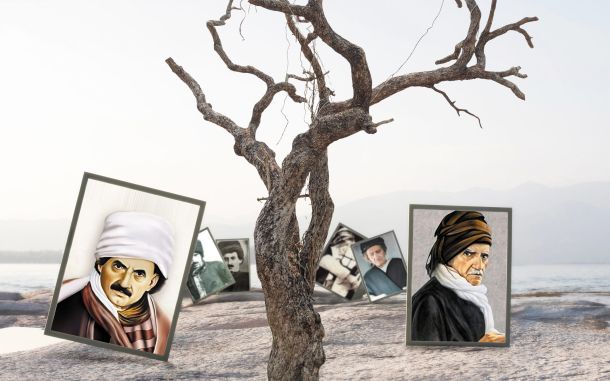Nostra Aetate at 60: A Vision Still Unfolding

In This Article
-
The declaration extends a compelling invitation that resonates across the centuries.
-
The Hizmet movement's subsequent engagement with Catholic institutions demonstrates the perduring vitality of the declaration's vision.
-
The path forward demands renewed commitment from all parties involved in the great work of interfaith understanding.
As we stand at the threshold of commemorating the sixtieth anniversary of Nostra Aetate's promulgation on October 28, 1965, we find ourselves witness to one of the most extraordinary metamorphoses in the annals of interfaith relations. This Declaration on the Relation of the Church with Non-Christian Religions emerged not merely as a theological treatise, but as a luminous response to humanity's darkest hours and an enduring testament to the possibility of religious reconciliation in our fractured world.
Genesis of reconciliation: From the ashes of Shoah to the dawn of understanding
The genesis of Nostra Aetate cannot be divorced from the profound spiritual earthquake that the Shoah inflicted upon the Christian conscience. The unfathomable horrors of the Holocaust led the Catholic Church into a period of deep moral reflection, prompting a difficult reexamination of its long history of anti-Jewish attitudes and how these may have contributed to the tragic destruction of European Jewry.
Amid this moral reckoning, leaders of remarkable vision and courage emerged. Pope Saint John XXIII, blessed with an intuitive pastoral sensibility that transcended doctrinal rigidity, recognized with extraordinary clarity the urgent imperative for the Church to fundamentally reexamine its relationship with the Jewish people. His providential encounter with the French Jewish historian Jules Isaac on June 13, 1960, would prove to be one of those pivotal moments upon which the trajectory of history turns.
Isaac, bearing the unbearable weight of personal tragedy—having lost his beloved wife and daughter to the Nazi machinery of death—presented the Pontiff with a meticulously documented dossier entitled The Teaching of Contempt. This scholarly indictment revealed how centuries of certain Christian teachings and traditions had fostered attitudes that allowed anti-Jewish prejudice to take root and spread. The encounter left an indelible impression upon John XXIII’s compassionate heart, igniting the ecclesiastical processes that would ultimately birth this revolutionary declaration.
Cardinal Augustin Bea, the erudite German Jesuit and biblical scholar whom John XXIII entrusted with leading the Secretariat for Christian Unity, emerged as the principal architect of this transformative document. Despite encountering formidable resistance from various ecclesiastical quarters, Bea's scholarly acumen, diplomatic virtuosity, and unwavering conviction proved instrumental in crafting a declaration that would fundamentally recalibrate the Church's approach to the world's great religious traditions.
The Islamic dimension: Article 3's prophetic call to fraternity
While scholarly attention has justifiably focused upon Nostra Aetate's groundbreaking statements regarding Judaism, Article 3's treatment of Islam represents an equally momentous watershed in the long and often tumultuous history of Catholic-Muslim relations. The declaration proclaims with remarkable clarity: "The Church regards with esteem also the Muslims. They adore the one God, living and subsisting in Himself; merciful and all-powerful, the Maker of heaven and earth, who has spoken to men."
More significantly for our contemporary global context, the declaration extends a compelling invitation that resonates across the centuries: "Although in the course of the centuries many quarrels and hostilities have arisen between Christians and Muslims, this most sacred synod urges all to forget the past and to work sincerely for mutual understanding and to preserve as well as to promote together for the benefit of all mankind social justice and moral welfare, as well as peace and freedom."
This clarion call to transcend historical grievances and collaborate in the pursuit of peace, freedom, social justice, and moral renewal found profound resonance among diverse Muslim communities worldwide, most notably within the Hizmet movement inspired by the luminous teachings of Fethullah Gülen.
A historic convergence: Gülen's visit to Rome
The Catholic Church’s invitation was met with a historic response when Fethullah Gülen traveled to Rome on February 9, 1998, for a private audience with Saint John Paul II. This extraordinary encounter represented far more than a diplomatic courtesy; it embodied the concrete manifestation of Nostra Aetate's most sublime aspirations, bringing together the successor of Saint Peter with a distinguished Muslim scholar whose life had been dedicated to the noble cause of interfaith understanding.
During this historic colloquy, Gülen emphasized with profound eloquence the enduring relevance of Saint Paul VI's prophetic call—the very pontiff who had solemnly affixed his signature to Nostra Aetate on that transformative October day in 1965. Gülen reaffirmed his unwavering commitment to interfaith dialogue while articulating practical pathways through which Muslims and Catholics might collaborate: fostering mutual understanding through collaborative academic research, orchestrating shared pilgrimages to sacred sites, and establishing partnerships in education and social service that would bear fruit for generations to come.
This momentous meeting exemplified how Nostra Aetate's abstract principles could be transmuted into tangible relationships and concrete initiatives. The Hizmet movement's subsequent engagement with Catholic institutions and communities across the globe—from educational partnerships that span continents to interfaith symposia that bring together the world's greatest minds—demonstrates the perduring vitality and practical relevance of the declaration's revolutionary vision.
The foundations of freedom: Dignitatis Humanae's essential contribution
As we commemorate Nostra Aetate's sixtieth anniversary, we must also prepare to celebrate the equally momentous sixtieth anniversary of Dignitatis Humanae (December 7, 1965), the Declaration on Religious Freedom, which will be observed this December. This complementary conciliar document provides the indispensable foundation upon which all authentic interfaith dialogue must be constructed.
Dignitatis Humanae proclaimed with unprecedented clarity that religious freedom constitutes an inherent dignity of the human person, rooted not in the subjective disposition of the individual, but in the very nature of human beings as rational creatures called to seek and embrace truth in freedom. The declaration articulated that "all men are to be immune from coercion on the part of individuals or of social groups and of any human power, in such wise that no one is to be forced to act in a manner contrary to his own beliefs, whether privately or publicly, whether alone or in association with others, within due limits."
This revolutionary affirmation of religious liberty as a fundamental human right creates the essential preconditions for meaningful interfaith dialogue. Without the guarantee of religious freedom at both individual and communal levels, dialogue degenerates into mere tolerance of difference rather than authentic engagement with the other. A sustainable and truly transformative interfaith dialogue demands that every participant possess the inviolable right to practice, profess, and propagate their faith without fear of persecution or coercion.
The symbiotic relationship between Nostra Aetate and Dignitatis Humanae becomes apparent when we consider that genuine respect for other religious traditions—the cornerstone of Nostra Aetate—can only flourish in an environment where religious freedom is not merely tolerated but actively protected and promoted. The two declarations together create a theological and practical framework that enables believers of different faiths to encounter one another not as competitors in a zero-sum game, but as fellow pilgrims on the human journey toward truth and transcendence.
Evolution and expansion: From Nostra Aetate to human fraternity
The visionary legacy of Nostra Aetate has continued to evolve and expand throughout the decades, finding its most recent and perhaps most comprehensive expression in the historic "Document on Human Fraternity for World Peace and Living Together," signed by Pope Francis and Ahmad al-Tayyeb, the Grand Imam of Al-Azhar, in 2019. This extraordinary document, building upon the theological foundation laid by Nostra Aetate and the freedom guaranteed by Dignitatis Humanae, presents an even more expansive vision of religious cooperation in addressing the manifold challenges confronting our global civilization.
The Document on Human Fraternity represents the maturation of conciliar thinking, demonstrating how the seeds planted sixty years ago have grown into a mighty tree whose branches extend across all continents and whose roots reach deep into the shared soil of human dignity. The Hizmet movement, along with countless other interfaith initiatives worldwide, continues to serve as one of the Catholic Church's most significant partners in nurturing this expanded vision of religious collaboration.
Through innovative educational initiatives that bridge cultural divides, profound cultural exchanges that foster mutual understanding, and collaborative social projects that address humanity's most pressing needs, these movements continue to embody the practical implementation of Nostra Aetate's ideals in our contemporary context, while simultaneously demonstrating the vital importance of the religious freedom guaranteed by Digitatis Humanae.
Unfinished symphony: The challenge of complete reception
Despite these remarkable achievements that would have been unimaginable to previous generations, an honest and unflinching assessment reveals that Nostra Aetate's transformative goals remain only partially fulfilled after six decades of implementation. The declaration's reception among both Catholics and non-Catholics has been uneven and incomplete, and its revolutionary potential has yet to be fully realized across all sectors of religious life.
Within Catholic communities worldwide, while official Church teaching has firmly embraced the declaration's principles and incorporated them into magisterial documents, grassroots understanding and implementation have progressed at varying speeds. In many Catholic institutions, educational curricula are still catching up with official doctrine, pastoral formation programs sometimes provide limited preparation for interfaith engagement, and popular religious understanding can occasionally reflect older pre-conciliar perspectives of exclusivity and caution.
Among non-Christian communities, including the global Muslim community, awareness of Nostra Aetate's significance and appreciation of its revolutionary character varies dramatically across different regions and cultural contexts.
Political conflicts that instrumentalize religious identity, deep-seated cultural misunderstandings perpetuated by ignorance and prejudice, and unhealed historical grievances continue to impede the full realization of the declaration's sublime vision of cooperation and mutual respect.
The path forward: Renewed commitment for a new era
As we mark this momentous sixtieth anniversary, both Nostra Aetate and Dignitatis Humanae remain simultaneously profoundly relevant and urgently necessary. The declarations' core insights—that religious diversity reflects the magnificent richness of divine providence, that dialogue is infinitely preferable to confrontation, that believers of different faiths can collaborate for human flourishing while maintaining their distinct identities, and that religious freedom is the sine qua non of authentic spiritual life—speak with prophetic clarity to our contemporary challenges.
The path forward demands renewed commitment from all parties involved in the great work of interfaith understanding. Catholic institutions must continue deepening their comprehension and implementation of both declarations' principles, ensuring that the vision of religious freedom and interfaith respect permeates every level of ecclesiastical life. Muslim communities and other religious groups must engage more actively and creatively with the unprecedented opportunities for dialogue and cooperation that Nostra Aetate creates, while simultaneously advocating for the religious freedom that Dignitatis Humanae champions.
Most importantly, we must transcend symbolic gestures and ceremonial encounters to achieve substantive collaboration that addresses the urgent needs of our common humanity. The existential challenges of our historical moment—climate change that threatens our planetary home, grinding poverty that degrades human dignity, systemic social injustice that perpetuates inequality, and the erosion of moral values that undermines social cohesion—require the coordinated response of all people of faith working together. Nostra Aetate provides not merely permission for such collaboration, but an imperative mandate, while Dignitatis Humanae guarantees the freedom necessary to pursue this collaboration authentically.
Conclusion: A vision for future generations
Sixty years after their respective promulgations, Nostra Aetate and Dignitatis Humanae stand as both monumental achievement and soaring aspiration. These declarations fundamentally transformed the landscape of interfaith relations and established principles that continue to guide religious dialogue in our interconnected world. Yet their complete potential remains tantalizingly unrealized, awaiting more profound reception and more comprehensive implementation by future generations of believers.
The extraordinary journey from the ashes of the Shoah to the hope of human fraternity, from Jules Isaac's painful testimony to the collaborative vision of Pope Francis and Ahmad al-Tayyeb, from centuries of religious persecution to the affirmation of religious freedom as a fundamental human right, demonstrates both the remarkable distance we have traveled and the challenging road that still lies ahead. The luminous legacy of John XXIII, Cardinal Bea, and all the visionary figures who contributed to these revolutionary documents calls us not merely to commemorate their historic achievement, but to complete their unfinished work.
In our fractured world, torn asunder by religious misunderstanding and sectarian conflict, threatened by the rise of religious extremism and the erosion of religious freedom, Nostra Aetate and Dignitatis Humanae remain twin light of hope illuminating the path toward a more harmonious future. Their combined vision of religious communities working together for peace, justice, and human dignity within a framework of guaranteed religious freedom is not merely an aspiration—it is an urgent necessity for the survival and flourishing of our global civilization.
The fundamental question that confronts us on these momentous sixtieth anniversaries is not whether this vision possesses continued relevance, but whether we, the inheritors of this extraordinary legacy, possess the courage, wisdom, and unwavering commitment necessary to transform aspiration into reality, hope into achievement, and vision into lived experience.
The seeds planted six decades ago in the fertile soil of the Second Vatican Council await their full harvest. May these anniversary celebrations inspire renewed dedication to the unfinished work of building a world where religious diversity enriches rather than divides, where ancient wisdom traditions collaborate rather than compete, where the children of Abraham, Isaac, and Ishmael walk together toward a more just and peaceful future, and where every human being enjoys the fundamental freedom to seek, embrace, and live according to their understanding of divine truth. In this noble endeavor lies not merely the fulfillment of conciliar vision, but the hope of our common humanity.









